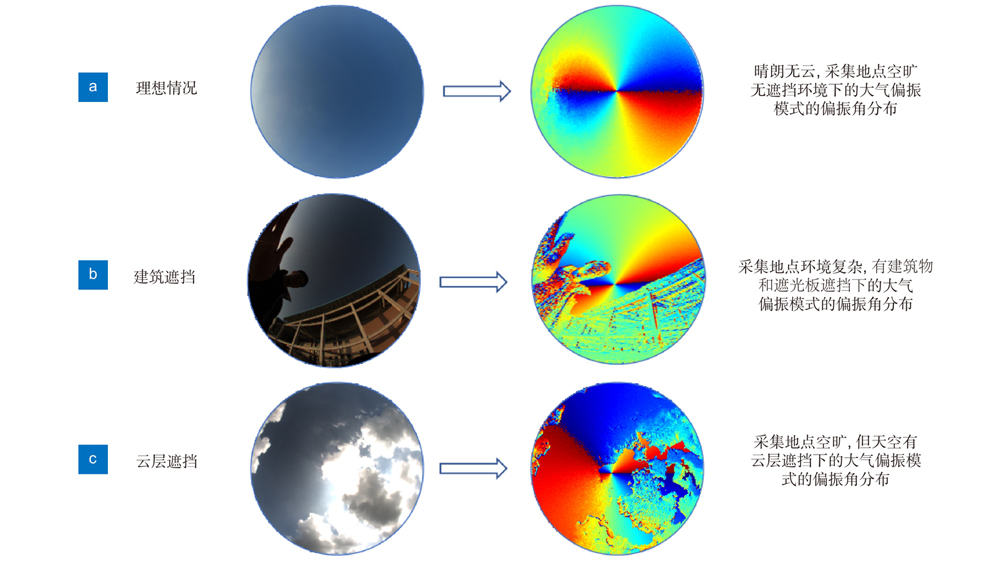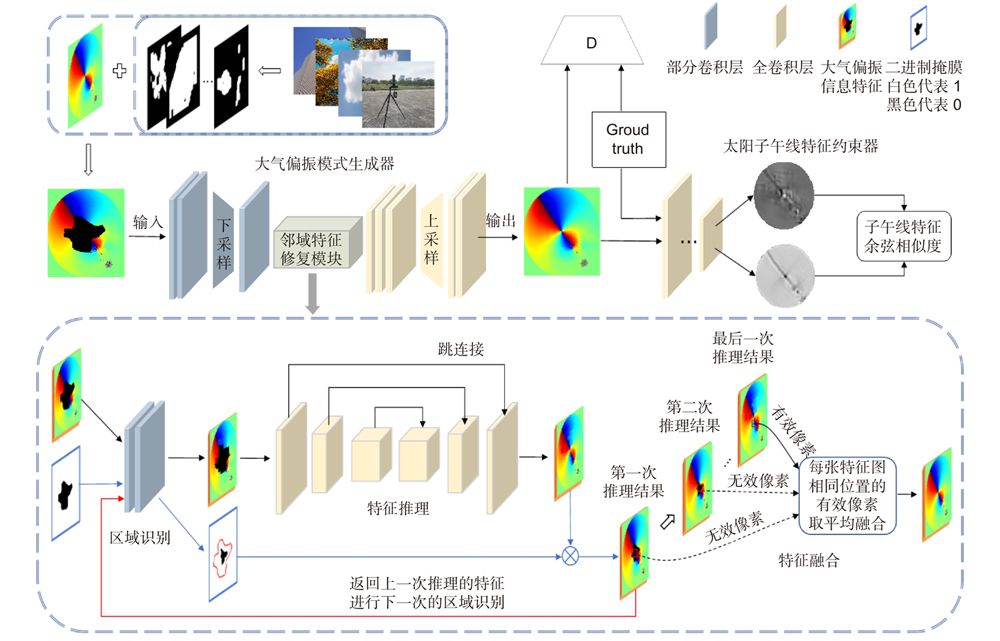Qian Cheng, Xinjian Gao, Jun Gao, Xin Wang, Tianyi Dang, Yuan Yan. A generative method for atmospheric polarization modelling based on neighborhood constraint[J]. Opto-Electronic Engineering, 2022, 49(6): 210423
Search by keywords or author
- Opto-Electronic Engineering
- Vol. 49, Issue 6, 210423 (2022)

Fig. 1. Polarization angle distribution of the atmospheric polarization under different occlusions

Fig. 2. Network structure of the atmospheric polarization mode generation based on neighborhood constraints
Fig. 3. Schematic diagram of the binary mask update for the area recognition
Fig. 4. Atmospheric polarization mode masks
Fig. 5. Angular error results of the solar meridian under different masking types
Fig. 6. Reconstruction result of measured atmospheric polarization mode
Fig. 7. Comparison of the solar meridian angle error before and after reconstruction
Fig. 8. Comparison of the results of different reconstruction methods
Fig. 9. Constrained ablation results of the solar meridian
Fig. 10. Influence of different values of
λ2 on the performance of this method
| ||||||||||||||||||||||||||||
Table 1. Quantitative analysis of the results of different reconstruction methods
| |||||||||||||||||||||||||||||||||||||||||
Table 2. Comparison of navigation angle errors of different reconstruction methods

Set citation alerts for the article
Please enter your email address



